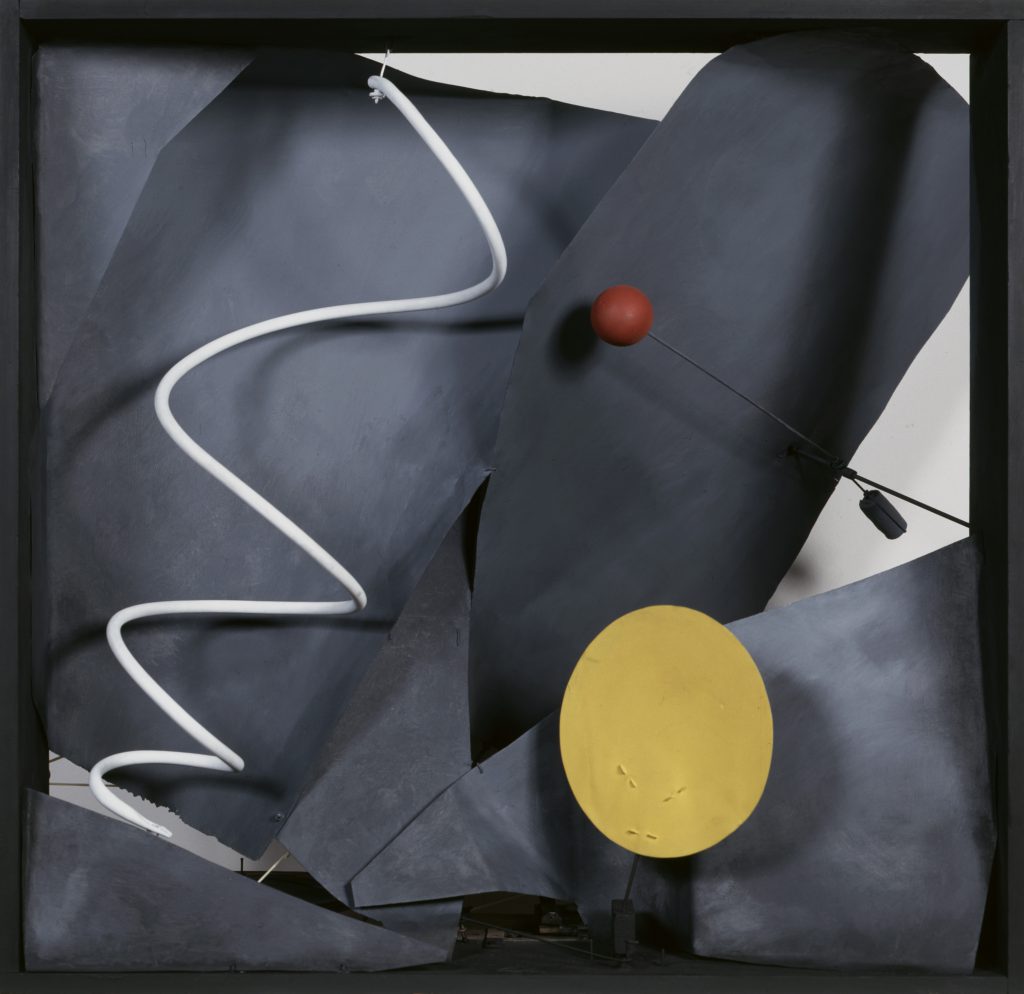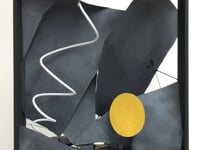





![Untitled (double-sided drawing) [recto] (1943)](https://calder.org/wp-content/uploads/historical-photos/Untitled-double-sided-drawing-recto-1943-450x327.jpg)
National Gallery of Art, Washington, D.C. Alexander Calder: 1898–1976. 29 March–12 July 1998.
Solo ExhibitionTate Modern, London. Alexander Calder: Performing Sculpture. 11 November 2015–3 April 2016.
Solo ExhibitionWhitney Museum of American Art, New York. Calder: Hypermobility. 9 June–23 October 2017.
Solo ExhibitionNational Gallery of Victoria, Melbourne. Alexander Calder: Radical Inventor. 5 April–4 August 2019. Originated from Montreal Museum of Fine Arts.
Solo ExhibitionIn Roxbury, Calder creates Black Frame. One I like very much myself is a black wooden frame, with sheets of metal within it, warped into various planes, and having certain moving elements, which are the brilliant spots in an otherwise sombre setting.
Following a visit in October of 1930 to Piet Mondrian’s studio, where he was impressed by the environmental installation, Calder made his first wholly abstract compositions and invented the kinetic sculpture now known as the mobile. Coined for these works by Marcel Duchamp in 1931, the word “mobile” refers to both “motion” and “motive” in French. He also created stationary abstract works that Jean Arp dubbed “stabiles.”